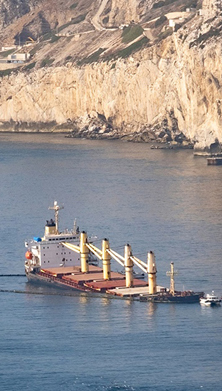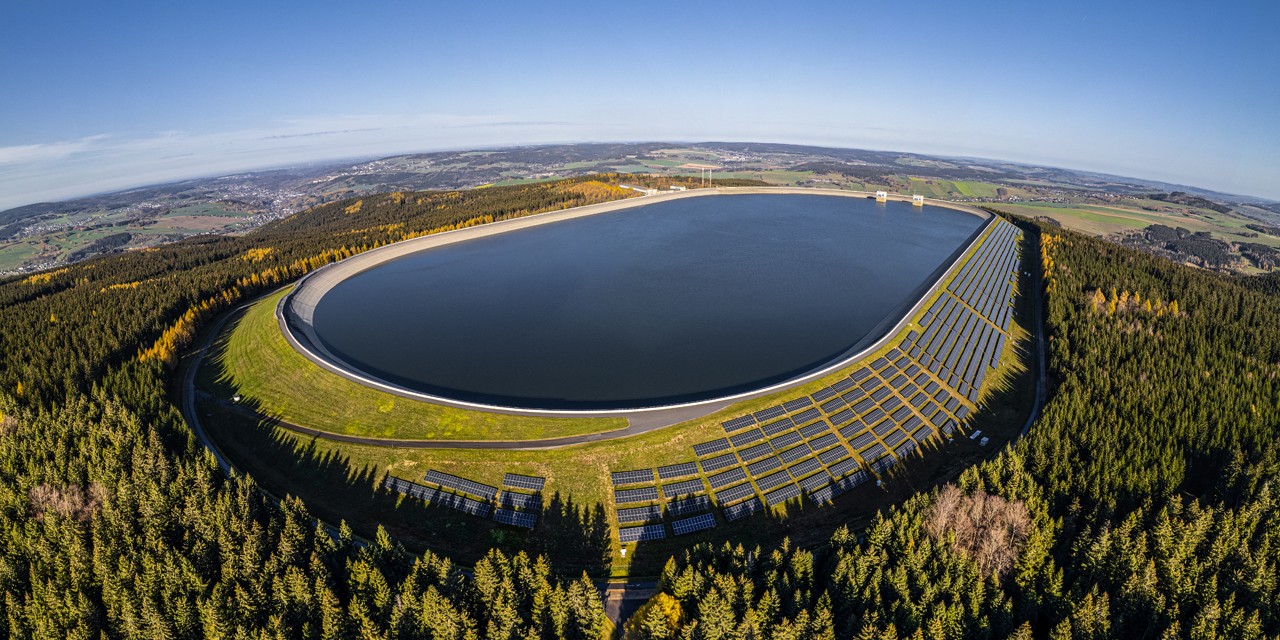- There are considerable amounts of freely available information on social impacts of large-scale projects as well as best practices on how to address them, so that each new project need not be regarded as unique - negative impacts can be predicted in broad outline.
- The social challenges that mega projects face require growing multi‐stakeholder participation and collaboration. Nowadays, affected communities or interest groups have the possibility of voicing their concerns through social media networks and acting through international partnerships with NGOs.
- The main objective of a project owner is that forced displacement and resettlement, if unavoidable, ensures that the affected communities are not worse off than before the displacement to ensure long-term success of mega infrastructure projects.
Key findings
Introduction
Large scale infrastructure (LSI) are mega projects, that require extensive budget, planning, construction periods, and expertise in numerous areas. Their main purpose is to enable development, achieved by integrating or accelerating the economic growth in a specific area. Some examples of LSI are highways, hydroelectric dams, mines, bridges, transmission lines, etc. These projects are usually, but not always, located in rural or remote areas. Different from cities, these places have a lower population density, in many cases are inhabited by indigenous communities, and can be located near or be part of protected areas. These conditions result in negative environmental and social impacts that must be addressed in advance and comprehensively to reduce and mitigate risks throughout the project’s lifecycle.
The main objective of this edition of the ESG Risk Briefing series is to examine the social impacts of the LSI projects, specifically the issue of displacement and resettlement of communities, to recognize its importance, and to indicate some of the best practices mitigating them.
One of the main social issues is the development-induced displacement and resettlement (DIDR) that happens due to the large scale of a planned project. This occurs when local people are asked to leave their homes or lands because of an industrial development. A poorly managed DIDR process can have severe consequences for the local communities and the developers which could undermine the long-term success of an infrastructure project. Community members might not only lose their homes, but also their source of employment, cultural identity, and their formal and informal community structures. This might lead to greater vulnerability, economic marginalization, food insecurity and higher health risks. Therefore, impoverishment occurs not only on an economic level, but on social and cultural levels as well. The positive or negative consequences of a displacement process also extend into the host community.

Managing forced displacement as part of large-scale project implementation
International organizations such as the World Bank, the Organization for Economic Cooperation and Development (OECD), and the United Nations have recognized the importance of an adequate displacement framework for their projects. At the same time, investors have shown strong commitment to avoid funding projects that do not follow the best practices of community displacement. The World Bank has faced strong criticism in the past from the funding of thousands of projects in the developing countries that have caused the loss of land or jobs to approximately 3.4 million people. In order to respond to these allegations, enhance management of both environmental and social risks, and improve development outcomes, the World Bank launched the Environmental and Social Framework in 2018. This new framework stresses the following principles:
- Avoidance is the preferred mitigation measure. Whenever possible, avoiding displacement of communities will always have the highest hierarchy as design alternatives are studied. However, this must guarantee that the health and safety of the community will not be affected in return.
- Involuntary resettlement, meaning that the people have no right to refuse land acquisition or restrictions, must be minimized and appropriate mitigation measures must be carefully planned and implemented.
- The livelihood and living standards of the community must be improved or at least restored to pre-displacement levels. This means that the community must not be worse off than before the resettlement.
- Finally, vital for success is the appropriate disclosure of information, meaningful consultation, and the informed participation of those affected throughout the planning and the implementation phases.
While there are some regional policies that address social impacts from mega projects, the World Bank offers an international framework that can be adapted to local needs. DIDR policies and frameworks determine the minimum requirements of the development plan of a region. Hence, the importance of incorporating these basic principles into any level of government, institution, or organization from the local to the international level.

Social impact mitigation mechanisms and best practice examples
Non-financial mechanisms
In geographies with sparse populations, training and employment for the local community members are long-term opportunities that can be greatly beneficial for a project. Initially, a local labor market study should be undertaken to determine the employment potential. Contractors can be encouraged or required to hire local workers. Ideally, programs should be designed and delivered to train local people for skilled jobs during construction and operations, and, if necessary, starting years before the beginning of construction. Project targets can be developed for local employment and reported regularly. The cooperation between local labor authorities and government to match local workers with employment opportunities will make the implementation smoother.
Host communities can also benefit from infrastructure or service delivery. For example, a hydroelectric power plant can provide the community with an irrigation system that would increase farmer’s yield and income. Local job creation and service delivery is of key importance to host communities. Significant notice and lead time must be given to the host community to allow them to prepare and make the most of the opportunities.
Financial mechanisms
Financial mechanisms should be approached in a strategic way to ensure that the project has a positive impact on the community, and that the mechanisms are sustainable in the long-term. Benefit sharing is distinct from other forms of compensation, such as a one-time payment or resettlement support, due to its ongoing nature and it being unrelated to the mitigation of project impacts.
Financial mechanisms can be in the form of a percentage share of project revenue, special taxes or tariffs, allocation of an ownership share either individual or collective, etc. Some examples of best practices include:
- Equitable access to electricity services on a regular and legally mandated basis for the neighbor communities from a hydro dam project.
- Revenue sharing from a new mining project to an indigenous population for providing their land. Calculated according to a formula and approach defined in the regulations.
- Land lease from the local small holders to an electric power plant which consists of an upfront compensation and a regular rent payment for the leased land for the life of the project.
- Special taxation is set for a hydropower project to finance conservation of the nearby protected area and the development of a host community.
DIDR mechanisms are a form of mitigation and can occur in a proactive or reactive manner, depending on the government or the investors’ expectations. However, the most successful examples of benefit sharing mechanisms are those that have been incorporated as legislation for development projects. This ensures that all similar projects in a region adhere to the same standards, hence the importance of using best practice mechanisms, especially in developing countries where most LSI projects occur.
Community engagement
Each LSI project has specific requirements and is in a unique social and environmental context, thus no mitigation measure or mechanism will be universally right. Community engagement throughout the project's lifecycle is vital to develop tailored solutions for which particular attention must be paid to gender aspects and the needs of the poor and the vulnerable. To support these efforts, Free, Prior and Informed Consent is a good practice for local communities and is a right recognized in the United Nations Declaration on the Rights of Indigenous Peoples. Valuing benefit sharing and community engagement as a pathway to social acceptance in communities and setting it as a priority within the development process can be challenging. However, community support is key to achieve positive and effective outcomes for projects.
Conducting a diligent Social Impact Assessment (SIA) at preliminary stages of planning the project are considered as best practice. The assessment demonstrates risks and opportunities of the project together with the feasibility of measures to identify and realize them. Project benefits should be linked to development objectives, which may be expressed in national, regional, or local development plans and strategies. Examples of development objectives to which the project might contribute include provision of infrastructure, access to electricity, food and water security, increased income, access to health services, or education. Additionally, the Social Impact Assessment can be combined with the Environmental Impact Assessment.

Barriers to the success of Development-Induced Displacement and Resettlement
There are several factors that contribute to the failure of DIDR actions. Firstly, the budget allocation for this process should not only compensate the acquired tangible assets of a person, a process known as expropriation. Then, a correct cost evaluation should assess and internalize the costs of displacement and resettlement, including the intangible assets. Failure to do so would result in impoverishment, as the people would have to pay from their own pockets to achieve the same life quality they had before the displacement.
Equally important to reduce the risk of DIDR failure is the policy framework set at a local, national, or international level. Impoverishment and human rights violations occur mostly in projects that do not follow any policy guideline or a professional evaluation. To supervise its implementation, the strength of the competent institutions is also crucial and, in many cases, not enough, as most LSI projects are in developing countries with weak institutions. Finally, the disregard of the displaced and the host community throughout the project lifecycle and the decision-making process would result in their lack of consent and discontent with the DIDR plan.

Rising Public Awareness
Social issues derived from LSI projects receive growing attention from different interest groups. The perception of infrastructure as a synonym of development has shifted during the last decades as poorly managed DIDR plans have gained in public interest and, thus, the media. Non-governmental organizations play a key role in highlighting the topic. They work to empower the displaced and the host communities by attracting media attention, exposing the problems, and assisting the affected communities at the negotiation table and conflict resolution processes. This helps to reduce power asymmetry with big corporations, governments, or policy frameworks that could be imposing unfair conditions on those affected.
The international community is increasingly demanding that decisions are made in transparent processes, where the performance of all parties, including governments, private‐sector organizations, and communities is voiced openly. It is increasingly expected that there will be opportunities to raise concerns and that these will be considered.
What is the role of industrial insurers?
Property & Casualty insurance plays an essential role in supporting the development of LSI across the sectors. Without insurance, construction and operating companies may face enormous financial losses should an accident occur. To succeed in this sector, we at Allianz Global Corporate & Specialty (AGCS) must look beyond today issues, to identify the key risks and challenges of tomorrow and develop appropriate mitigation.
While many operators of LSI projects already practice and understand the importance of a diligent community engagement and benefit sharing, there have been developments in the past that failed to properly address concerns of local communities. In some cases, these projects divided communities, caused protests, and continue to experience legacy issues years later. Allianz has developed ESG guidelines for sensitive business sectors, which include LSI and associated social issues.
AGCS, the industrial insurance arm of the Allianz Group, supports its clients with identifying and assessing material ESG issues and develops recommendations on how to mitigate these risks. Following an assessment of company, sector and country-specific ESG risk databases, human rights-sensitive transactions are screened against criteria. To identify potentially critical LSI projects, a case-by-case decision-making applies at AGCS. During the in-depth assessment process, a team of ESG experts reviews LSI projects, trying to define in how far they seek to foster mutually beneficial outcomes for the local community, building trustful relationships and an open engagement.

Conclusion
LSI projects are an opportunity for the economic and social development of a region with potential important benefits for the communities involved. However, they can also signify critical changes in their livelihood and in many cases forced displacements. To make the most out of LSI projects, there are several widely available and constantly improved principles and best practice mechanisms for DIDR.
Community engagement from early planning stages and throughout the project’s lifecycle is a key success factor that will tailor the mechanisms to each project’s characteristics. Some main barriers to the success of DIDR in LSI projects are low budget allocation, costs externalization, unfair policy frameworks, and weak institutions. For such big projects, different expectations also come from the diverse interest groups and increasing media attention. All these factors highlight the importance of an adequate DIDR framework, policy, and plan. The industrial insurance sector plays an essential role in supporting the development of LSI across the sectors and can assist their clients with reducing the negative social impacts from these projects by providing the best practice examples and ensuring a collaborative approach.
The role of AGCS
AGCS supports its clients to identify and assess material risks and develops recommendations on how to mitigate these risks. In a fast changing world, AGCS identifies emerging issues and develops risk management strategies.
Our consulting team is available at: AgcsSustainability@allianz.com
We are dedicated to deliver the best possible solutions to the management, control and reduction of ESG risks.
The authors
Samara Jacal Sanchez & Alina Morozova
Allianz Risk Consulting – ESG Business Services
References
The World Bank Environmental and Social Framework
https://www.worldbank.org/en/projects-operations/environmental-and-social-framework
http://pubdocs.worldbank.org/en/837721522762050108/Environmental-and-Social-Framework.pdf
OECD Guidelines for Aid Agencies on Involuntary Displacement and Resettlement in Development Projects https://www.oecd.org/dac/environment-development/1887708.pdf
Michael M. Cernea, Compensation and benefit sharing: Why resettlement policies and practices must be reformed. Water Science and Engineering, Volume 1, Issue 1, 2008, Pages 89-120, https://doi.org/10.1016/S1674-2370(15)30021-1.
Michael M. Cernea, Understanding and Preventing Impoverishment from Displacement: Reflections on the State of Knowledge. Journal of Refugee Studies, Volume 8, Issue 3, 1995, Pages 245–264, https://doi.org/10.1093/jrs/8.3.245
Free Prior and Informed Consent – An Indigenous Peoples’ right and a good practice for local communities - FAO. United Nations. https://www.un.org/development/desa/indigenouspeoples/publications/2016/10/free-prior-and-informed-consent-an-indigenous-peoples-right-and-a-good-practice-for-local-communities-fao/
Allianz Group companies
AGCS offices
Newsletter
Keep up to date on all news and insights from AGCS















